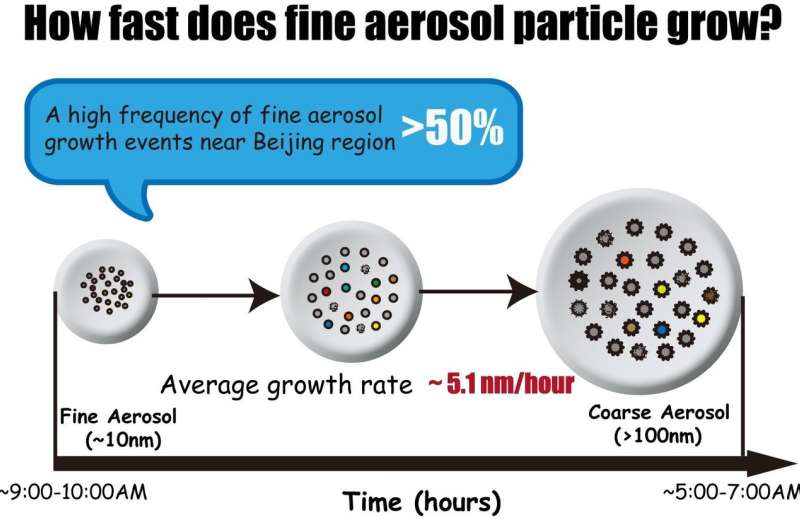Frequent growth events and fast growth rates of fine aerosol particles in Beijing

Serious environmental problems have arisen alongside the rapid economic development of China, including the well-known issue of haze pollution. Not only does haze bring low atmospheric visibility, causing traffic-related problems, but it can also damage human health, and affect other aspects of the weather and climate, directly or indirectly. Secondary aerosol formation and rapid increases in aerosol particle sizes are believed to play important roles in haze formation. However, some simple but important questions remain unanswered: How frequently and how fast do fine aerosol particles grow? And what affects their rates of growth?
Professor Chuanfeng ZHAO (Beijing Normal University) and his collaborators sought to answer these questions based on observations from a comprehensive experiment referred to as "AC3E" in Xianghe, Hebei, China, in June 2013. In a newly published study, they report a high frequency (~50 percent) of growth events of fine aerosol particles, with fast growth rates of between 2.1 and 6.5 nm/hour. The average growth rate of fine aerosol particles was around 5.1 nm/hour. A review of related studies suggested that the growth rate of fine aerosol particles is highest in megacities, followed by urban and forest regions, with rural and ocean regions having the lowest rates. Among the four contributing mechanisms of nucleation, internal coagulation, external coagulation and multi-chemical reaction, the suggestion is that nucleation—under high concentrations of NOx, SO2 and water vapor—most likely plays the dominant role.
"Although we are not sure if the fine aerosol particles are all from the new particle formation, it is clear that they often grow very fast at the size range of 10-100 nm. Within less than 20 hours, fine aerosol particles with sizes around 10 nm can grow to larger than 100 nm. This partially explains why the atmosphere can only keep clear for 1-2 days before it turns back to "dirty," resulting in haze events. This contribution is even more serious in winter due to higher relative humidity," explains Professor ZHAO.
More information: Chuanfeng Zhao et al, Growth rates of fine aerosol particles at a site near Beijing in June 2013, Advances in Atmospheric Sciences (2018). DOI: 10.1007/s00376-017-7069-3
Provided by Chinese Academy of Sciences




















